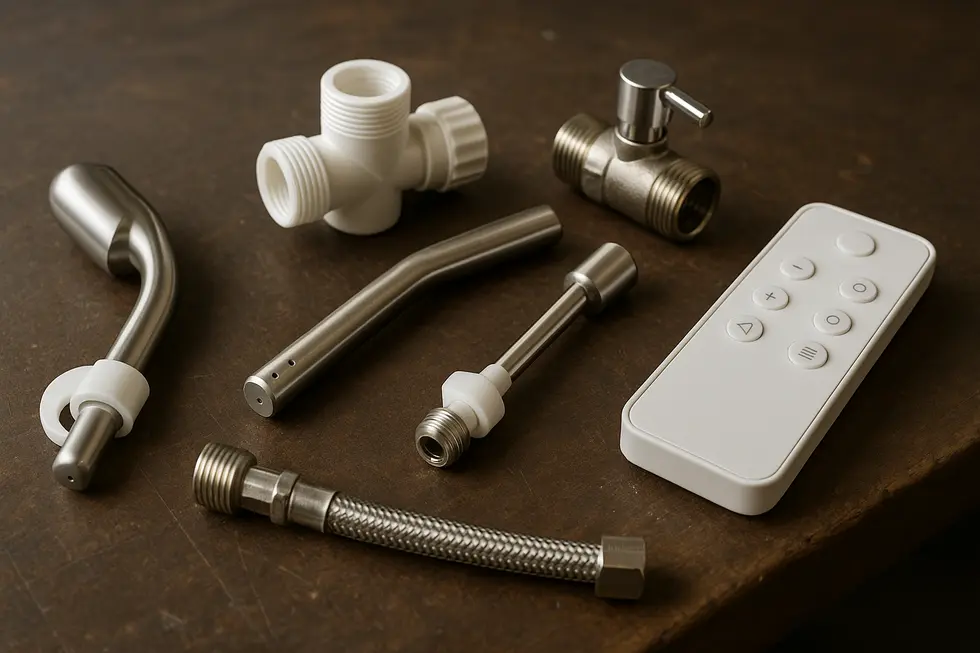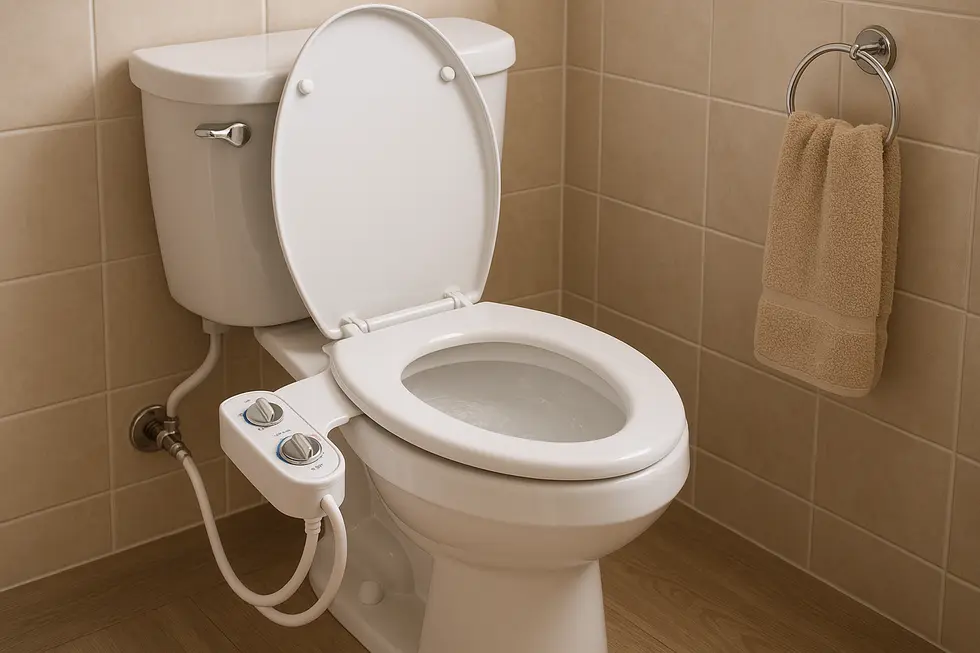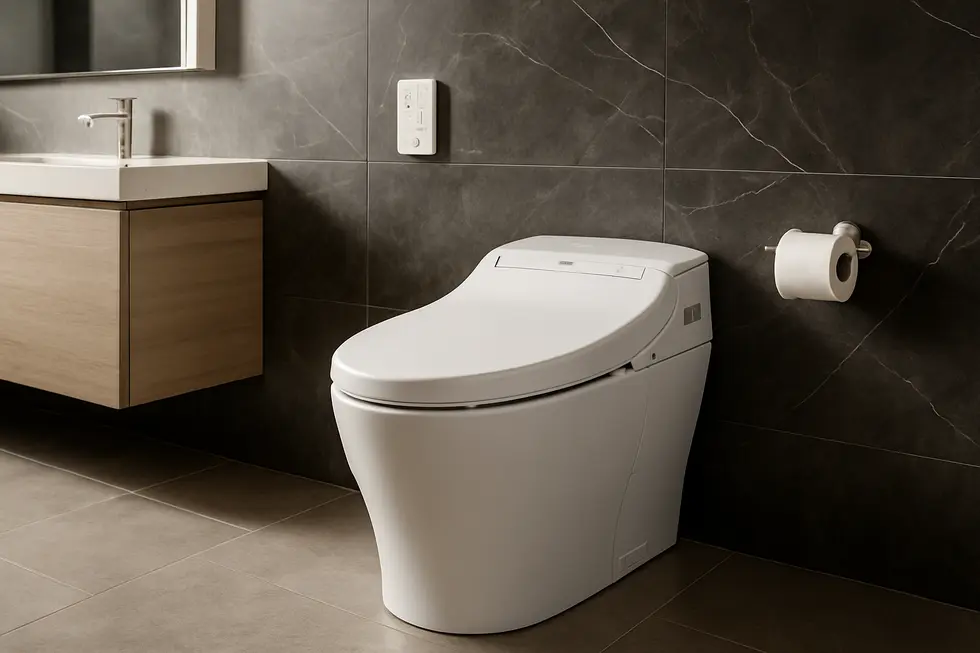Bidet Attachment
The Evolution of Bidet Parts: A Clean Revolution in Innovation and Design
Bidet parts, integral components in personal hygiene, have undergone significant technological advancements and material innovations. This article sheds light on the developments in design, the global economic factors influencing manufacturing, and the impact on environment and maintenance practices. Through this exploration, we will understand how these aspects are interwoven with daily life, offering a better standard of cleanliness for families.
From Brass Valves to Smart Sensors: The Material Science and Technology Powering Modern Bidet Parts

A glance inside today’s bidet reveals a quiet revolution. Traditional brass valves and molded plastic knobs still anchor the system, yet they now coexist with micro-processors, antimicrobial polymers, and retractable stainless-steel nozzles. This hybrid of proven mechanics and cutting-edge electronics is the engine behind the comfort and cleanliness users have come to expect.
Early attachments relied on simple water pressure, so rough-cast zinc hardware and vinyl tubing were acceptable. Modern components, by contrast, must withstand pressurized warm water, periodic self-sterilizing flushes, and the tight tolerances required by slimline designs. Engineers increasingly specify lead-free brass, PEX-reinforced supply lines, and high-impact ABS that resists thermal shock. The result is hardware that endures thousands of duty cycles without mineral buildup or thread fatigue.
Electronics have transformed the user interface just as profoundly. Capacitive touch panels and wireless remotes replace bulky selectors, freeing designers to tuck control boards into wafer-thin seats. Variable-speed pumps and instant heaters now adjust flow and temperature within a fraction of a degree, while optical sensors track seat occupancy to activate energy-saving modes. Even ostensibly simple parts like nozzle caps hide innovation: a silicone gasket impregnated with silver ions inhibits bacterial growth, and a magnetic latch guides the cap into perfect alignment after every cleaning cycle.
Hygiene remains the core mandate, so materials are vetted not only for strength but also for bio-compatibility. Polished 304 stainless nozzles resist rust, but they also shed biofilm thanks to a mirror-finish of less than 0.2 µm roughness. Some models coat interior water paths with hydrophobic nano-layers that reduce stagnant droplets where microbes might multiply. These advances explain the documented health and environmental upsides many consumers cite when weighing the benefits of modern bidet toilets.
Finally, ergonomics shapes every decision. Compact apartments drive manufacturers to nest valves, filters, and electronics within a footprint no larger than a traditional seat. For elderly or mobility-impaired users, oversized buttons, illuminated indicators, and slow-close hinges foster independence without sacrificing aesthetics.
In sum, the marriage of smart sensors, precision plastics, and time-tested metals has elevated each humble part of the bidet into a miniature example of 21st-century engineering (see additional innovations in compact smart toilet designs at https://bazyths.com).
From Kaiping to Your Bathroom: How Global Economics Shape Every Bidet Part

A bidet nozzle, valve, or mounting bolt may look simple, yet its journey to your toilet seat traces a complex web of economic forces. The backbone of that web is the manufacturing “cluster effect” found in regions such as Kaiping, China. Hundreds of nearby foundries, plating shops, and molding facilities specialize in single tasks—stamping stainless steel spray plates, casting solid-brass T-valves, or precision-molding nozzle caps. Because each plant sits minutes, not continents, from the next, raw brass or ABS resin flows through machining, polishing, and assembly lines in days. The result is shorter lead times, rapid design tweaks, and aggressive pricing that still allows room for research and development on pressure-control cartridges and self-cleaning mechanisms.
However, the same tight geography that lowers production costs can collide with tariff policy. Import duties intended to protect domestic plumbing suppliers often add ten or twenty percent to the landed cost of bidet parts, amplifying price sensitivity at checkout. Some North American assemblers now hedge by ordering unfinished components abroad and performing final machining domestically, a strategy that satisfies “made here” rules while preserving the clusters’ efficiency. Others diversify toward Southeast Asian or Mexican partners to avoid single-region risk—a lesson underscored when pandemic lockdowns idled Chinese ports.
Demand trends pull these supply-chain levers even harder. Rising hygiene awareness, an aging population seeking gentle cleansing, and the post-pandemic appetite for touch-free fixtures have pushed bidet seat sales into a steep growth curve. Manufacturers chase that curve with integrated circuit boards, slimline heating elements, and dual-nozzle arrays, scaling production runs and absorbing the fixed costs of robotics and quality testing rigs. Analysts forecast the global toilet seat market, which includes smart bidets, will top eight billion dollars by 2031—evidence that economies of scale are only beginning to unfold. Analysts project the global toilet seat market will reach USD 8.3 billion by 2031.
For consumers comparing prices, understanding this backdrop clarifies why a stainless supply line might spike one quarter and drop the next. It also explains why shopping options range from low-cost imports to premium, tariff-buffered models assembled locally. If you are weighing those choices, you can preview availability and regional pricing by exploring where you can buy a bidet attachment in America.
From First Spray to Long-Term Savings: How Bidet Parts Drive Adoption, Care, and a Greener Bathroom

When people decide whether to install a bidet, they are really judging the parts hidden beneath the porcelain rim. Smooth-gliding valves that regulate pressure, rust-proof mounting plates that hold steady under shifting weight, and retractable, self-rinsing nozzles all shape the first impression. If the control knob turns with a gentle click and the water arc lands exactly where it should, the learning curve shrinks; the user feels in control, not experimented on. That confidence is why high-quality components consistently correlate with repeat use and word-of-mouth recommendations.
Adoption, however, is only the starting line. The service life of each part decides whether enthusiasm turns into a lifelong habit or another abandoned bathroom gadget. A weekly wipe of the nozzle cap with mild soap prevents mineral buildup that could narrow spray channels. Twice a year, disconnecting the braided supply line and flushing it clear saves the valve from sediment that would otherwise grind seals and invite leaks. Screws anchoring the attachment plate are prone to loosening after several months of seat-lifting; a quick retorque keeps alignment true, preserving the delicate gasket that stops drips between bowl and bidet. None of these tasks takes longer than changing a roll of paper, yet they extend component life by years and keep replacement costs tiny.
Those extra years matter far beyond the household budget. Every intact nozzle and functional valve equals fewer kilograms of metal and plastic sent to landfill and fewer pallets of toilet paper harvested, milled, wrapped, and shipped. Life-cycle analyses show that a bidet using roughly one-eighth gallon per cleaning offsets the pulp, bleach, and transport energy of up to 180 rolls annually. Even modest upgrades—like switching from chrome-plated to solid stainless screws—reduce corrosion waste and extend the maintenance interval, multiplying the ecological return on the original material investment.
For skeptics worried that washing outweighs wiping, the data tell another story: water for one flush dwarfs water for one spray, and eliminating paper waste slashes deforestation, packaging plastic, and sewer load. A deeper dive into the broader environmental benefits of bidet use reveals how thoughtful part design and simple upkeep turn personal comfort into collective climate action.
Final thoughts
Bidet parts are at the forefront of bathroom innovation, representing a blend of advanced design, practical manufacturing economics, and a commitment to sustainability. These components are reshaping personal hygiene solutions, emphasizing comfort and efficiency in modern households. As families increasingly seek eco-friendly and user-friendly bathroom solutions, bidet parts play a pivotal role in meeting these evolving needs.
Experience a new standard of clean with PEGABidet—designed for comfort, safety, and independence. Join thousands who trust us to make personal care simple and dignified. Contact us at contact@pegabidet.com
About us
PEGABidet is a brand owned by L.A NEXTGEN LLC, based in California. We design intuitive, hygienic, and accessible bathroom solutions that prioritize safety, dignity, and independence. Our mission is to make personal care effortless and empowering for people at every stage of life.

